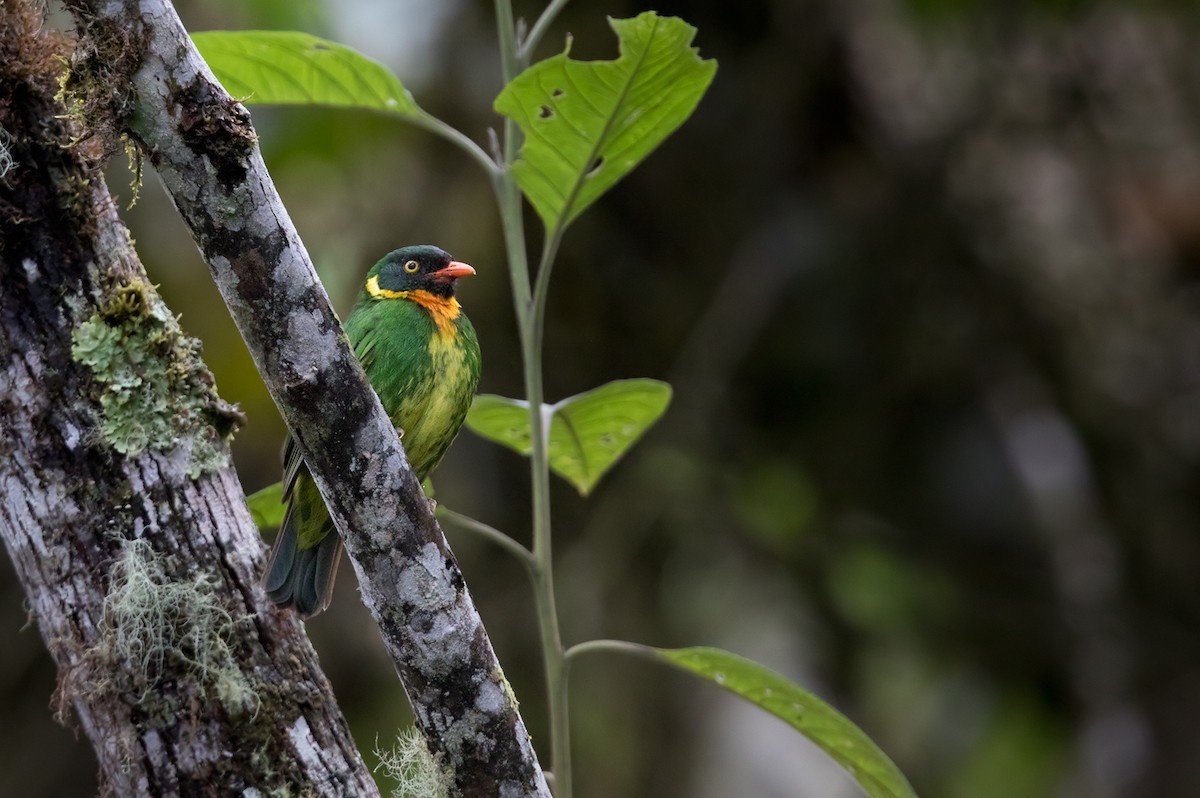Masked Fruiteater
A species of Typical Fruiteaters Scientific name : Pipreola pulchra Genus : Typical Fruiteaters
Masked Fruiteater, A species of Typical Fruiteaters
Botanical name: Pipreola pulchra
Genus: Typical Fruiteaters
Content
Description General Info
 Photo By Lars Petersson
Photo By Lars Petersson Description
At 17 cm (7 in), the masked fruiteater is a medium-sized fruiteater. Both the sexes are bright green above, with a yellowish iris, coral-coloured beak and grey legs. The male has a black face and upper throat, a bib-like orange lower throat, mottled green flanks and a yellowish belly. The female lacks the mask and bib, and its underparts are green streaked with yellow. This bird could be confused with the scarlet-breasted fruiteater (Pipreola frontalis), but that species has pale tips to the tertial wing feathers, the male has a scarlet throat but no collar, and the female has a yellow upper throat and unbarred breast. The voice is a very high-pitched whistle "tseeeeeeeweee". The call note is a rising "tsweet". 
Size
18 cm
Nest Placement
Tree
Feeding Habits
Masked Fruiteater exclusively consumes fruit as part of its diet, although specific varieties and foraging behaviors remain undocumented. Unique dietary preferences or adaptations are not detailed.
Habitat
The habitat of masked Fruiteater encompasses montane forests, typically characterized by dense tree coverage with a diverse stratification of flora. These environments exhibit features such as heavy precipitation and high humidity, which facilitate the lush vegetative growth ideal for masked Fruiteater's foraging and nesting requirements. These forests stretch across broad geographical regions along mountainous areas, providing suitable ecological niches for masked Fruiteater.
Dite type
Frugivorous
General Info
Feeding Habits
Bird food type

Fruit
Distribution Area
The masked fruiteater is endemic to Peru. It occurs on the eastern side of the Andes Mountains at altitudes of between 1,600 to 2,400 metres (5,200 to 7,900 ft) where its natural habitat is montane forests. 
Species Status
P. pulchra has a wide range and is common in most of its range. The population size has not been quantified, but it is thought that the total number of birds is decreasing. However this is at a slow rate, and the International Union for Conservation of Nature has assessed its conservation status as being of "least concern". 

 Photo By Lars Petersson
Photo By Lars Petersson Scientific Classification
Phylum
Chordates Class
Birds Order
Perching birds Family
Cotingas Genus
Typical Fruiteaters Species
Masked Fruiteater